
Why we sweat
Sweating may make you feel uncomfortable, but it’s actually helping to control your body temperature. “It’s our body’s built-in air conditioning system, but it can also happen as a result of emotional and physical stress,” says Dr. Jason Rivers, a clinical professor in the department of dermatology and skin science at the University of British Columbia, and medical director at Pacific Dermaesthetics in Vancouver.
The average person has between two million and four million sweat glands. The body-cooling type of perspiration is produced by the eccrine glands, which are found all over the body. In hot weather or during physical activity, they emit a fluid composed of water, sodium and trace minerals; when this fluid evaporates, body temperature drops.
The type of sweat that results from emotional triggers comes, partially, from our apocrine glands, which are concentrated in the armpits and around the genitals. The glands function is to secrete an oilier, milkier fluid, high in unsaturated fatty acids, that travels along the hair shaft during times of anxiety, anger, pain or sexual arousal. It becomes odourous when bacteria on the skin break down its fats.
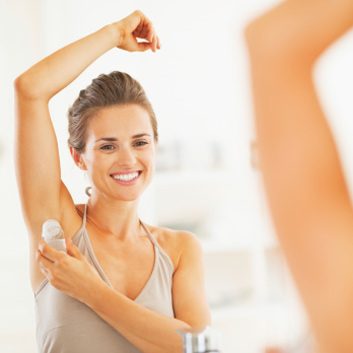
When to worry about sweating
Most people can keep sweating and odour under control with soap, water and a daily application of deodorant or antiperspirant. But for those with hyperhidrosis‚ excessive sweating, simple daily hygiene probably won’t do the trick (see our story on excessive sweating).
There are two types of this condition: Localized hyperhidrosis occurs in specific areas like the armpits, palms of the hands and soles of the feet, says Rivers. Generalized hyperhidrosis happens all over the body and arises from an underlying condition such as thyroid disease or diabetes, or from taking certain medications such as neuropsychiatrics, which treat mood disorders.
Note that a sudden change in your sweating pattern‚ night sweats, a change in body odour, or sweating much more or much less than usual‚ can signify a health condition (for example, overactive thyroid, heart attack and some types of cancer), and you should seek medical attention. Otherwise, consider one of these products to mask perspiration smell, wetness or both.
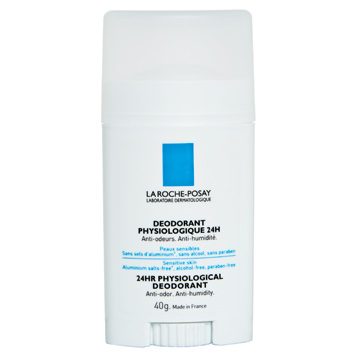
For preventing odour
Examples:
La Roche-Posay 24Hr Physiological Deodorant; Arm & Hammer Advance Deodorant; Avene Regulating Deodorant Care; Byly Sensitive Deodorant; Inhibitif Hair-Free Deodorant; Lavilin Underarm Deodorant Cream; Soft & Dri Aluminum Free Deodorant
How they work:
Deodorants usually have an antibacterial action to stop the growth of bacteria in the armpits that cause sweat to smell,” says Jasmine McCue, pharmacy manager at ExtraFoods in Kamloops, B.C. Ingredients can include the baking soda in Arm & Hammer, the triclocarban in Soft & Dri or the zinc in Byly and Lavilin. Often, they have perfumes in them to mask the smell, and astringents that help shrink pores to reduce the amount of sweat that comes out.‚However, since they are not formulated with aluminum (the key ingredient in antiperspirants), deodorants mainly target odour, not wetness. Some products, including Byly, Avene and La Roche-Posay, also contain ingredients such as silk protein, thermal water and allantoin, a moisturizing agent, to soothe sensitive underarms. Inhibit if not only fights odour but also contains chemicals that slow the rate of hair growth, allowing for less-frequent shaving.
Need to know:
Deodorants will not prevent sweat, so choose an antiperspirant or antiperspirant/deodorant if you are concerned about damp armpits. “To control odour, some people find they have to reapply a deodorant multiple times,” says McCue. Roll-ons and sticks are more effective than sprays, as they give you better coverage. All products work best when applied to clean, dry armpits. If you have sensitive skin or allergies to fragrance or other ingredients, test your deodorant on a small patch of skin first, and don’t use it immediately after shaving.
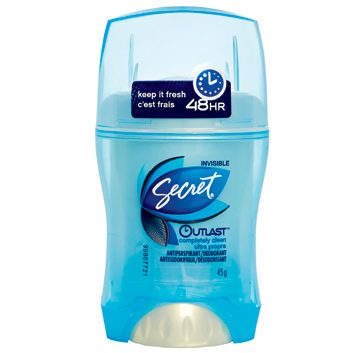
For preventing odour and wetness
Examples:
Secret Outlast Completely Clean Antiperspirant/Deodorant; Arm & Hammer Advance Invisible Sport Solid; Ban Unscented Invisible Solid Antiperspirant/Deodorant; Degree Active Clean Antiperspirant/Deodorant with MotionSense Technology; Dove ClearTone Skin Renew Antiperspirant; Dry Idea StainClear Antiperspirant & Deodorant Invisible Solid; Lady Speed Stick Power Antiperspirant/Deodorant; Nivea Stress Protect Antiperspirant/Deodorant; Soft & Dri PowerStripe Antiperspirant/Deodorant
How they work:
“Antiperspirants contain aluminum compounds that stop sweat by obstructing the pores where the product is applied,” says McCue. (Get more information about aluminum here) “Some antiperspirants also have a deodorizing action from antibacterial agents [such as the baking soda in Arm & Hammer or the zinc in Nivea]; others contain talc to absorb excess sweat. Secret and Lady Speed Stick contain fragrances that have an additional odour-masking effect; in Soft & Dri (PowerStripe) and Degree (MotionSense), they are time-released to help keep odour away all day. Dry Idea won’t leave white residue or stains. Dove has moisturizing calendula and sunflower seed extract to reduce underarm discolouration caused by irritation. For maximum sweat protection, look for antiperspirants with aluminum zirconium tetrachlorohydrex; McCue says it provides the longest-lasting effect of all the aluminum compounds.
Need to know:
Most people can eliminate odour and wetness with a daily application of antiperspirant. Some can even apply it just once every two days if they aren’t doing much physical exertion. “After bathing, wait until your skin is dry to apply, especially formulas containing talc,” says McCue. Otherwise, they will absorb the water from your shower instead of absorbing sweat. Avoid using antiperspirants right after shaving, as your skin will be more vulnerable to irritation.
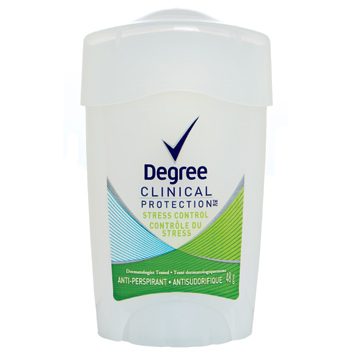
For clinical-strength sweat protection
Examples:
Over-the-counter: Degree Clinical Protection Stress Control Anti-Perspirant & Deodorant; Dove Clinical Protection Visibly Smooth Wild Rose Anti-Perspirant; Dry Idea Advanced Dry Invisible Solid Antiperspirant & Deodorant; Lady Speed Stick Clinical Proof Anti-Perspirant/Deodorant; Secret Clinical Strength Stress Response.
Behind-the-counter (ask the pharmacist): Certain Dri Clinical Strength Anti-Perspirant Roll-On; Drysol Dab-On Antiperspirant; Perspirex Antiperspirant Roll-On.
Online: SweatBlock
How they work:
So-called “clinical-strength” antiperspirants have a higher concentration of aluminum compounds that stop perspiration. “Usually, they contain up to 20 percent aluminum zirconium tetrachlorohydrex or aluminum chloride,” says McCue. The latter is the strongest type of aluminum used in antiperspirants and has the highest potential for irritation; it is the key ingredient in brands such as Perspirex, Drysol and Certain Dri as well as SweatBlock (soft towelettes soaked in aluminum chloride that you dab under the arms). Other clinical-strength products, including Secret, Dry Idea, Degree, Lady Speed Stick and Dove, feature odour-masking scents in addition to wetness control. Dove also contains agents that help soften underarm hair so that over time it looks and feels less noticeable. Although clinical-strength products are safe for anyone, they can be irritating, says McCue, so stick with regular antiperspirants unless you find that they are not strong enough for you.
Need to know:
Apply clinical-strength antiperspirants to clean, dry armpits at bedtime. “This allows enough time for the aluminum to block the pores while you’re sleeping, instead of potentially washing away with sweat if you put them on during the day,” says McCue. How long they last varies from person to person, but many users, especially of aluminum chloride products, need to reapply only every few days. However, Perspirex, Drysol and Certain Dri work best if used consecutively for the first four or five nights, says Rivers; then you can start to cut back. He suggests covering your armpits with plastic wrap after application, and wearing a snug-fitting T-shirt to bed; this helps the products to penetrate the skin. If you experience irritation such as a rash or broken skin, you may need to apply the antiperspirant less often, switch to a brand that has a lower concentration or discontinue use of clinical-strength products.
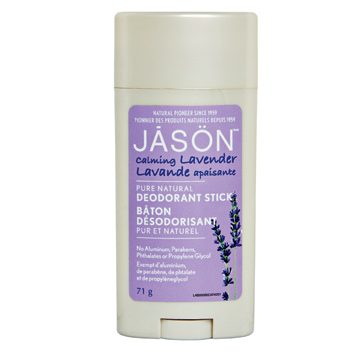
Natural deodorants
Examples:
Jason Calming Lavender Deodorant Stick; Biotherm Deo Pure Natural Protect 24H Deodorant; Druide Pur & Pure Deodorant; GeoDeo Natural Deodorant Plus Detox Complex; Green Beaver Unscented Natural Deodorant; Kiss My Face Active Life Deodorant Stick in Cucumber Green Tea; Lavanila The Healthy Deodorant; Pure & Natural Crystal Deodorant Stone; Soapwalla Deodorant Cream; Tom’s of Maine Original Care Deodorant; Weleda Citrus Deodorant Spray
How they work:
Natural deodorants containing witch hazel (Kiss My Face) or alum (Pure & Natural) stop wetness and mask odour using plant-derived ingredients. “My favourite is tea tree oil [Druide and Soapwalla], which helps kill bacteria,” says McCue. “Baking soda [in Jason, Green Beaver and Kiss My Face] helps neutralize the acidic secretions of bacteria that cause a smell. Hops, found in Tom’s of Maine, also have an antibacterial action. Many natural deodorants mask odour with essential oils, like lemon peel oil in Weleda and Lavanila; others, including Biotherm and GeoDeo, contain aloe extract to soothe underarms. Deodorant crystals like Pure & Natural (which you wet and then rub on your armpits) contain alum, a natural mineral salt that inhibits growth of bacteria and works as an astringent to close pores and reduce sweat. There are no artificial fragrances, phthalates, parabens or other chemical preservatives in the natural products listed.
Need to know:
Natural deodorants aren’t as effective as antiperspirants,” says McCue, “but if you apply them multiple times daily, you may have success. “Also, some can irritate, especially ones containing essential oils. Do a patch test in a small area and don’t apply right after shaving.
Related:
• The best eco-friendly beauty products for summer
• Which deodorant is right for you?
• 21 tricks for healthy skin
